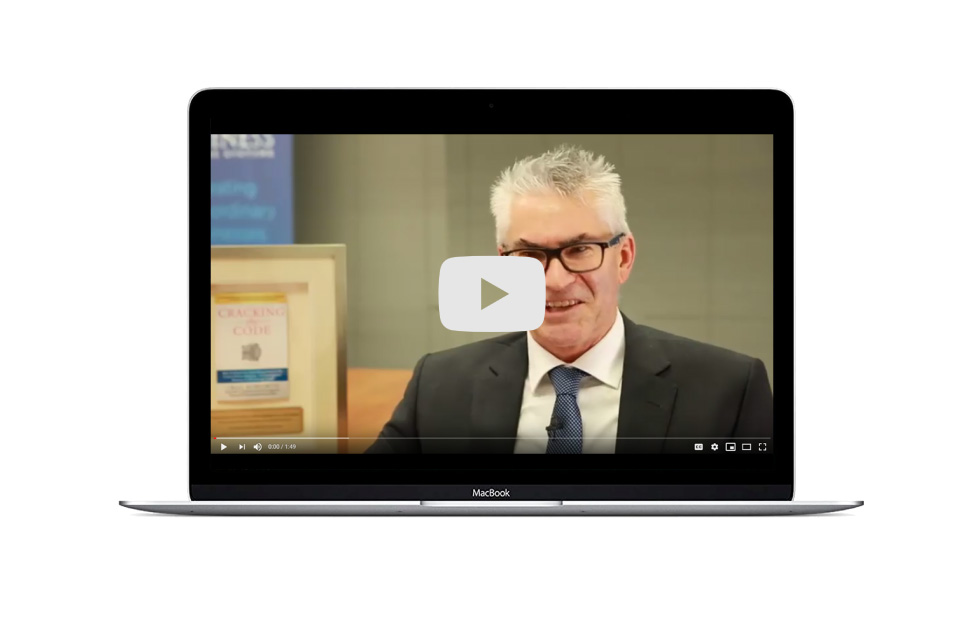If They Only Knew What You Could Do
Posted by Greg Roworth on Sep 14, 2020

Have you ever had the experience when you know you should have won a new client but then, they decided not to go ahead with you?
What makes it even worse is, you know that your potential new client has just made the dumbest decision in their life. You know exactly how much they would have gained from signing up with you and how wonderfully transformed their lives would have been if they chose you.
If they only knew!
It’s frustrating to experience, but the bigger factor is that failure to make these sales has a direct impact on your bottom line. What if you could convert more of these sales? How much improvement to your profit and cash flow would you have if they only knew what you could do?
What has happened in these situations is a disconnect.
Somehow, you haven’t been able to communicate the full value of your product or service to your client. You haven’t been able to fully illuminate the incredible benefits they would receive. They haven’t understood how special the reality of being your client is. And consequently, everyone loses.
This is such a common problem and I’m sure you have felt this way at times. There are four things that have typically gone wrong to get to this state of impasse. Each of these are a possibility, but in the worst-case scenario, you may be experiencing all of these issues in your attempts to communicate your value.
You fail to establish trust
Sometimes, we are so concerned with making a sale that we stop listening to what our client really wants. We push too hard or too early, instead of taking time to understand our client’s needs first, before we try to sell. We work to our agenda instead of the client’s. When this happens, we fail to establish trust with our client. They feel that we don’t care about them. We fail to connect and we fail to sell.
You fail to create an emotional desire for change
A client’s desire to change can vary on a scale from mild interest to life-or-death demand. In any marketing effort and sales negotiation, the client’s desire for change must reach a level where they are compelled to take action. If we fail to identify the real problem and the pain that creates and contrast that with the profound benefits or gains that our solution will bring, our chances of building sufficient desire for change diminish greatly. This is a very emotional element of the sales and marketing process which can often be neglected by overly focusing on the logical elements of the decision process. When you fail to engage your client’s emotions you will never create sufficient desire for change.
You fail to communicate your unique value
Nearly all my clients, even before working with me, are so proud of the quality and service they offer. However, they typically don’t actually specify how their quality and service is better than or different from every other competitor that claims the same thing. We fail to communicate how much more value we offer compared to our competitors. We don’t explain sufficiently why the client can only get these benefits from us. Consequently, the client becomes confused and often resorts to making a decision based on the cheapest price.
You fail to instil urgency
There is nothing worse, in the sales process, than to hear, “I need to think about it.” At this point, you may have built a great platform for the sale to proceed by creating trust, establishing desire and communicating value, but you haven’t done enough to instil a compelling “must have it now” drive. The hesitation at this point is caused by lingering doubts about whether buying from you is the best decision. You must overcome the inertia caused by fear of making the wrong decision and often many cultural factors that cause people to put off making a commitment.
SELLING IS AN INTERPERSONAL PROCESS
In any situation where creating an ongoing, mutually profitable relationship with your clients is beneficial, you need to see the process leading up to the point of purchase as an interpersonal process, much like the process of “courting.” Courting is an old-fashioned word now that described the process a young man went through to first attract, then go steady and then marry the young lady of their dreams. For most of us, the likes of Brad Pitt excepted, the prospects of going up to a total stranger and asking them to enter a long-term commitment with us in our first conversation is not likely to be successful. The same applies to sales.
To achieve a consistent and high level of conversion in our sales interactions, we need to develop a process that overcomes all four issues mentioned above. Selling is not a one-step event. You need to court your clients first, by making your business attractive and your products or service desirable. Then you need to develop trust elements in your marketing to build credibility and enable your clients to grow into knowing, liking and trusting you. You also need to communicate your unique selling proposition or your unique value while you build up the benefits of taking action so that your solution to their problem can be experienced and enjoyed.
If you can do all this in your marketing processes, you will find that the sales process is a breeze. When your clients come to you presold, you don’t have to do much selling to get them to buy.
How is it for you? If you find yourself frequently worried about your prices and how much your competitors charge, you need to work more on your marketing process to let your clients know what you can really do.
If you find it difficult to get people to make a decision to buy, you need to do more work up front. It’s not a matter of getting better at closing the sale. Those techniques don’t work very well any more. Now you have to be better at opening opportunities and building trust so that clients close themselves. That means working more on marketing than selling. It’s about warming clients up to the point where they are compelled to buy your solution, instead of being pushed into a hard sell.
If they only knew what you could do, your selling and your life would be a whole lot easier and more profitable.
If you would like to know more about how to have your potential clients coming to you presold and ready to buy, watch our free video training at https://businessflightpath.com/training

